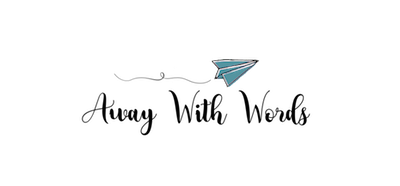The first thing everyone should do when they land in Korea is find themselves a Seoul mate, like Harrison, to show them the capital city. Not because you can’t experience the city Seoul-o (sorry, last one…), but purely because you’ll get the full encounter of Korean culture from an insider’s perspective; plus, you’ll fast-track your way to the best of Seoul’s three B’s: barbecue, beer and baseball.
This was my second time in Korea, with most of the first trip spent in the South-Eastern city of Busan, so I was was eager to find the top things to do in Korea’s capital. Seoul can be intimidatingly big for some, but the Koreans combat that with a high-tech subway system that is an entire underground world in itself – an efficient, reliable underground world that can take you everywhere with minimal stress. Here are my seven top things to do in Seoul, which can all be packed in to a 36-hour layover.
Myeongdong

Booking into Royal Hotel Seoul in Myeongdong is a top choice if you want to maximise time and base yourself in the belly of the city’s action. It is also extremely easy to get to on public transport from the airport. You can take the airport train (AMEX) to Seoul Station and then hop on the subway line to Myeongdong Station.
Myeongdong is the major shopping and entertainment hub in Seoul city; it’s a lively, energetic district that’s teeming with fashion stores, cheap Korean skincare outlets and street vendors. The area is also bursting with food and nightlife options, so basing yourself in the area ensures that you’ll have a a great time because there are so many things to do in Myeongdong alone – even if that’s all you want to do. Quick tips for the area:
- Try Isaac Toast for breakfast – this is a Seoul’s famous breakfast shop for toasted sandwiches. It’s literally a window in the wall with no seats, but the sandwiches are tasty – also great for hangovers.
- Pop into Republique K Pub for a Soju cocktail (the lychee one is delicious); soju is like the Korean equivalent of vodka.
- Stop off at Beer Bite – there are self-serve beer taps that are tracked by wristbands which charge you based on how much beer you pour.
- Walk the main avenue (Myeongdong-gil) for the night market to try street food and pick up little bits and pieces; it’s the same street as Royal Seoul Hotel)
The best Korean BBQ in Seoul

When it comes to Korean food, the county is famous for the Korean BBQ experience, but if you want the best Korean barbecue in Seoul then you’re going to need a local’s knowledge. Harrison took us to Ungteori Korean BBQ in Myeongdong, which is an all-you-can-eat barbecue for just under 15,000 Korean Won (approx. AED 45 or 11 euro).
Now, if you have never experienced Korean BBQ before, then you’ll likely have no idea how to approach the experience; it’s essentially a barbecue grill in the centre of your table where you cook the meat yourself. Korean people also enjoy a drink, so multiple Cass beers (a popular local beer) were had while we ate. Ungteori Korean BBQ was so good that we actually went there twice in 36 hours. Don’t miss it.
Baseball at Jamsil Stadium

Korean culture is heavily intertwined with baseball; it’s one of the country’s most popular sports, so if you get the chance to go to a baseball match then do it. Harrison took us to Jamsil Stadium to watch the LG Twins versus the Hanwha Eagles; the experience starts with stopping off at a shop to pick up some alcohol, then ordering snacks from the stadium stands, and it ends around 3 to 4 hours later! There are hilarious kiss-cam moments and rival dance squads that perform throughout the games. If you’re lucky, you’ll also catch an unbelievable Korean sunset from inside the stadium.
Bukchon Hanok Village

Bukchon Hanok Village is a throwback to traditional Korean life; it’s a labyrinth of streets that house hundreds of hanok, which are traditional Korean homes. The distinctive area offers a glimpse into Korean craftmanship and, if you’re willing to ascend a few hills then you’re guaranteed some awesome views of the city. What I love about Bukchon is that it’s an escape from the high-tech vibrancy of the city centre and allows you to comfortably get lost while stopping off at quaint teahouses. If you’re into photography, head to Bukchon observatory (essentially, an apartment balcony) where you can capture panoramic shots of the city along with cool shots of the traditional architecture.
Changdeokgung Palace

While Gyeongbokgung Palace will be one of the top sights in Seoul that pops up on Google, my recommendation is to visit Changdeokgung Palace instead – unless you have the time to do both. Changdeokgung Palace was originally built in the 15th century and is now a UNESCO world heritage. It is incredibly well maintained and actually housed royal family members as late as the twentieth century, so you can get a glimpse into how they lived while you explore the beauty of the palace. There were only a handful of visitors there when we were there, which made for a peaceful insight into the palace grounds. We skipped the “hidden garden” because you have to do it with a tour group and a guide which can often take the fun out of things.
N Seoul Tower

N Seoul Tower is a 236-metre tower that sits atop the nature park of Namsam; from its observation deck you can experience 360-views of Korea and look out at North Korea in the far-off distance. What is really refreshing about N Seoul Tower is how popular it is with the local people; it’s a meeting place for families, friends and lovers – many of who attach a “love lock” to the surrounding fences that look over the city. You can hike up to the summit to enter the tower, but if you’re stuck for time then jump on the cable car that takes you to the top while offering awesome views at the same time.
The observation deck itself is a circular walk-around and from one side, you can even see the Seoul City Wall (the original fortress wall); if I had more time, I would have liked to have hiked alongside it.
Insadong High Street

Insadong is another lively area of Seoul that’s parked between Gyeongdong Palace and Myeongdong. It’s an artsy, cultural hub and a walk down the main pedestrianised street is good for those who want to stop off for a bite to eat or a drink. We stumbled into Insadong by coincidence, but there were so many little teahouses and eateries that I would have liked to have tried. The little side streets and alleyways in the surrounding area also make the district a lot more traditional in its look and feel.
Seoul has so much more to offer; this is just a glimpse of what to expect from the Korean capital.






Leave a Reply